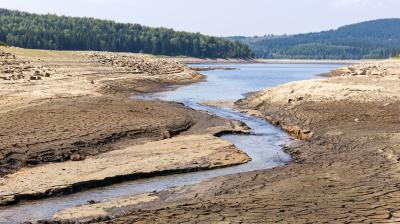WMO Hydrological Observing System (WHOS)
The WMO Hydrological Observing System (WHOS) is the framework for reliable hydrological data exchange and access at national, regional, and international level for all the hydrology data providers and users within and outside the WMO community to achieve interoperability to reduce the barriers to access and use of hydrological data by using standardized and brokering approaches. It plays a key role in providing sustainable data and information exchange infrastructure to support EWS by enabling timely and sustained data access, developing technical capabilities, and promoting the development and implementation of consensus-based data sharing policy. In addition, it supports the WMO Unified Data policy, the Global Basic Observing Network (GBON), and HydroSOS (as a data platform).
WHOS uses open standards and provides a services-oriented framework linking hydrological data providers (heterogeneous sources) and users (multiple uses) through a hydrological information system of systems (SoS) enabling data registration, data discovery and data access as part of the hydrological component of the WMO Integrated Global Observing System (WIGOS) and WMO Information System (WIS). WHOS supports (1) publication of hydrological data on the Internet via web services, (2) brokering and standardization of hydrological data published by heterogeneous data providers, and (3) discovery, access and use of hydrological data within the WHOS network. These WHOS capabilities rely on the use of standardized web services and data formats, such as those stemming from the Open Geospatial Consortium (OGC), International Organization for Standardization (ISO) and World Meteorological Organization (WMO).
WMO Cg-19 approved a resolution to further implement and develop WHOS and a component of WIS2.0. The Commission for Observation, Infrastructure, and Information Systems (INFCOM) approved the WHOS Operational Plan that was further adopted by Executive Council Seventy-Six (EC-76). The data access will be through the following methods:
-
Exchange of real time data through WIS2.0: Users of WIS 2.0 will be able to access data in real-time by subscribing to a Global Broker and receiving notifications when new data are available for download from a Global Cache or from the data provider. They will also access data directly through Web APIs (application programming interfaces), connecting their software (or their browser) and processing or visualising data of their interest.
-
Visualize and download data directly through WHOS Global portal, and global hydrological data centers
-
Visualize the metadata in WHOS global portal, global data caches and archives, but download the data directly through the data providers portal
Regional WHOS prototypes located in the La Plata Basin in South America (WHOS-Plata), Arctic Region (WHOS-Arctic), and SAVA river basin have now reached their final stage of implementation. National implementations have been caried in the UK, Italy, Dominica Republic, etc.
To easily leverage common WHOS functionalities such as data discovery and data access on the web by means of common web browsers, WHOS web portals are available online. The WHOS-Arctic web portal is implemented using ArcGIS Online for the map interface and USGS GWIS (Graphing Water Information System) for the time-series plots. The WHOS Global portal and La Plata uses the Water data explorer.







